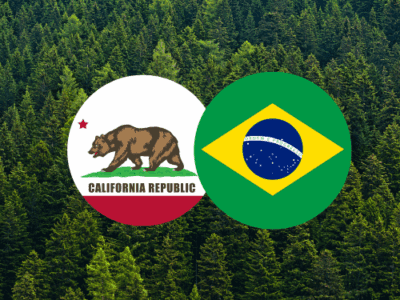Sierra Club Entitled to County’s GIS Database Under California Public Records Act, Says California Supreme Court
Back in the day, when I toiled in the California Attorney General’s Office, I served a stint supervising the unit of that Office that oversees litigation involving California’s “little Freedom-of-Information Act,” officially known as the California Public Records Act (PRA). My standing advice to my attorney colleagues was never to allow a case to reach the appellate courts in which we were defending government’s denial of public disclosure requests under the PRA. Why? Because government defendants routinely lose such cases on appeal-especially when the media or a prominent public interest organization is litigating on the other side.
That’s still a policy worth following, as illustrated by a largely overlooked decision of the California Supreme Court this week in an important PRA case. More to the point, it’s a decision with major implications for environmental advocacy and policy.
In Sierra Club v. Superior Court (County of Orange), the Supreme Court unanimously ruled that, under the PRA, the geographic information system (GIS) database maintained by Orange County constitutes a public record subject to disclosure to the Sierra Club.
County officials had refused the Sierra Club’s request for the county’s GIS database, claiming it to be “computer software” exempt from disclosure under the PRA. The Sierra Club then sued to compel disclosure of the GIS file under the PRA. Both the trial court and California Court of Appeal agreed with Orange County’s non-disclosure and exemption claim.
However, California Supreme Court Justice (and former U.C. Berkeley Law School Professor) Goodwin Liu and his judicial colleagues disagreed. Ruling for the Sierra Club, Liu’s opinion relied heavily on several points: 1) 2000 legislative amendments to the PRA specifically declaring that electronic data maintained by a state or local agency generally constitute “public records” subject to disclosure; 2) California voters’ adoption in 2004 of Proposition 59, an initiative measure that amended the state constitution to provide a constitutional right of access to public records and declares that a California statute “shall be broadly construed if it furthers the people’s right of access, and narrowly construed if it limits the right of access:; 3) a more general interpretive rule contained in a separate section of the California constitution mandating that a state law “shall be broadly construed if it furthers the people’s right of access”; 4) a 2005 opinion of the California Attorney General (!) concluding that parcel map data maintained in electronic format by a county assessor constitutes a public record subject to disclosure under the PRA; and 5) the fact that, contrary to Orange County’s legal position, fully 47 of California’s 57 other counties already voluntarily provide access to their GIS databases under the PRA (in part in reliance upon the Attorney General’s 2005 legal opinion).
The decision in Sierra Club v. Superior Court (County of Orange) appears to this observer to be well-reasoned, absolutely correct on the merits and grounded in sound public policy. But it’s also a most significant ruling when it comes to environmental law and policy, for at least a couple of reasons.
First, access to GIS data is a critically important tool for those public and private interest groups concerned with land use policy. Quoting with approval from an amici curiae brief filed by a coalition of media and open government groups, the Supreme Court in Sierra Club observed, “Public dissemination of GIS-formatted mapping data is…critical to the non-profit sector’s ability to monitor and respond to government actions involving real property. For example, Petitioner Sierra Club sought the records at issue in this action to determine–and convey to the public–the status of large areas of open space in Orange County, including whether each area is protected from development by conservation easements or public ownership or is threatened by a proposed development.”
Second and more broadly, stakeholders in environmental controversies have a growing interest in and need for electronic records in the digital age. To be effective before regulatory, legislative and judicial tribunals, those stakeholders will in the future have to be increasingly adept at incorporating computer-based materials as part of their advocacy. (Last month the California State Bar’s Environmental Law Section convened a thoughtful panel discussion on this very topic, as part of a day-long conference on Private Enforcement of California Environmental Law.) Much of that essential electronic data, in turn, is maintained by government agencies. Accordingly, the California Supreme Court’s decision this week in the Sierra Club case will likely serve as an important precedent for those dependent on electronic information to support their environmental work.







One Reply to “Sierra Club Entitled to County’s GIS Database Under California Public Records Act, Says California Supreme Court”
Comments are closed.